
Original Link: https://www.anandtech.com/show/1519
Price Guides: CPU and Motherboards, October II, 2004 Edition
by Adam Rader on October 24, 2004 12:05 AM EST- Posted in
- Guides
Introduction
Welcome back for the latest motherboard and CPU price guide. This week, we are trying out a new format for this and future price guides. The new layout should help to display information so that it's easier to understand. Hopefully, this will allow you to walk away better informed and able to make the best purchase decision for your own needs.The new format breaks down each product type into smaller chunks to make viewing the price lists from our RealTime Pricing Engine more appealing while giving more space to elaborate on our choices for each recommendation.
As always, we welcome any feedback or comments regarding these weekly price guides and hope that the new format benefits everyone.
AMD Processors - Athlon 64
With the release of their Athlon 64 lineup, AMD definitely let loose a very powerful and competitive product. It has been able to prove to the computing community at large that AMD can do more than just desktop application work. It is also very safe to say that they have brought these chips to market at very acceptable prices, especially when you consider that they are capable of running 64-bit operating systems and applications. While only the daring who are willing to try out the beta version of Windows XP 64-Bit Edition, or the technologically elite who immediately snagged up these processors and loaded a 64-bit aware version of Linux, have been able to see the total benefit of these processors, they still perform at the same level as Intel's offerings.With that said, prices are coming down on Athlon 64s and it's becoming easier every day to afford the new technology. This week shows us two chips in particular that are worth consideration.
If cost of adoption is a problem, then the Athlon 64 (754) 2800+ is AMD's answer. Coming in right around the $150 mark, this chip should be within the budget of even the most modest gamer or enthusiast.
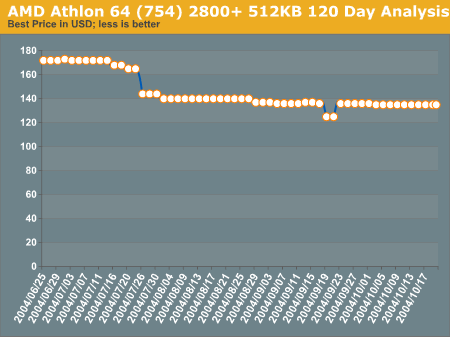
AMD's Athlon 64 3200+ is a solid processor offering some very competitive performance and pricing to anyone who demands every last bit of performance for their pennies spent. Of course, it's not a bad thing that this chip is currently priced in the $220 - $230 area.
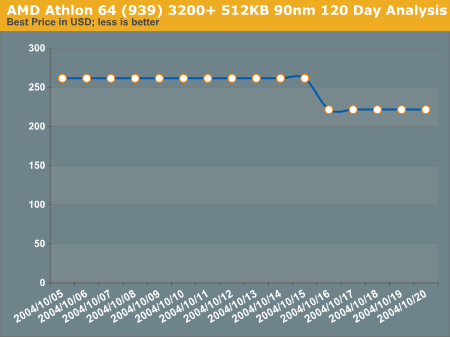
AMD Processors - Athlon XP
As always, no guide would be complete without mention of the tried and true Athlon XP series of processors. They've been around for quite some time now, but they still have the ability to pack a pretty solid punch. Prices on these chips seem to have been going up slowly, but surely, as AMD tries to push everyone towards their more competitive and newer products such as the Athlon 64. So, if an XP is what you are looking at, then the sooner you buy, the better off you will be. Athlon XP's still have their place among budget gamers and average desktop users. On the budget side of things, the Athlon XP 2400+, which is clocked at 2.0GHz, can be had for less than $70 shipped and is more than enough juice to get through office applications, compressing zip files, and so forth. Being based on the aging Thoroughbred core, this chip is definitely not going to be around for much longer in the retail market, which tells us that their prices aren't likely to go up much more, if at all.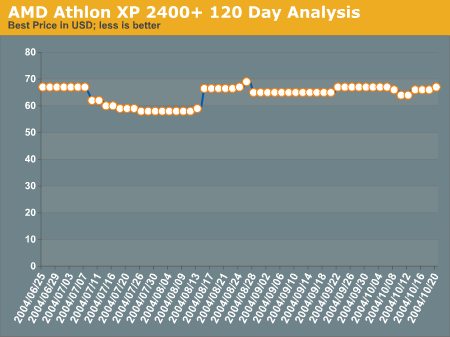
For a beefier CPU solution, the Barton based Athlon XP Mobile 2500+ is a great choice as it allows for two major options: extreme overclocking or low heat output at stock speeds. In either case, the performance will definitely fuel your gaming needs for a while longer without breaking the bank.
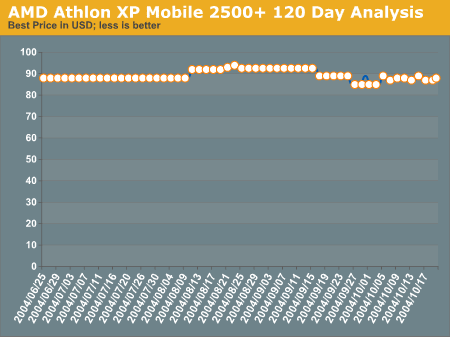
AMD Processors - Sempron
With AMD's latest series of product releases and the end of others, the Sempron comes out as a great bargain-priced processor that will eventually replace the Athlon XP lineup. One very nice attribute of the Sempron is that certain models make it very easy to adopt a newer socket 754 architecture without having to fork over the full cost of an Athlon XP right off the bat, while simultaneously having the choice of sticking to your existing motherboard and picking up a Socket A variant.The Socket A Sempron 2400+ is a very low cost chip, in the low $60 range currently. Unfortunately, it's not much more expensive to go with an Athlon XP based on the Barton core, which is capable of some very respectable overclocks, while the Thorton core has not yet stretched its legs and shown us what it is capable of in various configurations.
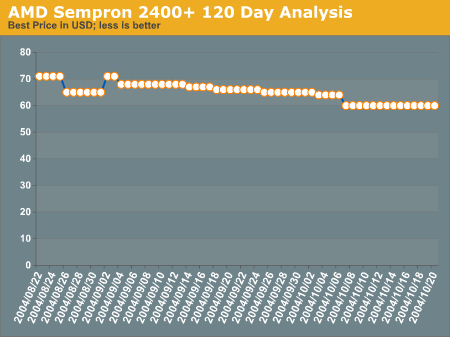
Even the Sempron 3100+, which is priced near the $130 mark, isn't too much lower in price compared to, for example, an Athlon 64 2800 512KB. Of course, for a lot of people, the $30 price difference does make an impact and for that reason, and because this is a Price Guide after all, the Sempron 3100+ is a great option to get into the Socket 754 market without spending a ton of cash. The obvious bonus here is that you can upgrade to an Athlon 64 later on, if and when your needs demand it without having to invest in yet another motherboard.
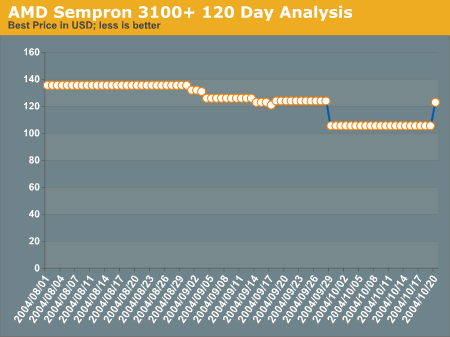
Intel Processors - Socket 775
Intel chips have gone through a lot in the last few years including the cancellation of major projects such as Tejas, and even recent announcements, stating that Intel will not pursue the 4GHz mark with their current P4 lineup. It's starting to sound like Intel is holding back for their dual core offerings next year, which should definitely be an interesting development in the world of CPUs.In the meantime, Intel's Pentium 4 530, which is clocked at 3GHz and carries a 1MB cache and 800MHz FSB, is priced to sell this week. Keep in mind that this processor, as well as the next one on this page, is on Intel's new Socket 775 architecture, which may require you to invest in a new motherboard, and quite possibly, RAM and a video card.
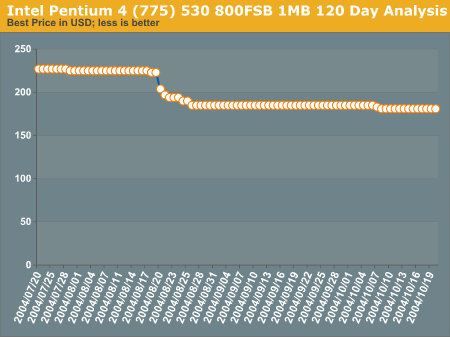
While we don't often like to recommend a nearly $300 processor in these guides, we would like to give the Pentium 4 550, clocked at 3.4GHz, honorable mention this week. It's definitely not a bad price for the chip, but it isn't something that we would recommend purchasing unless you are going for raw performance and actually have a use for it. In any other case, the 530 is definitely a capable and sufficient processor for pretty much anyone.
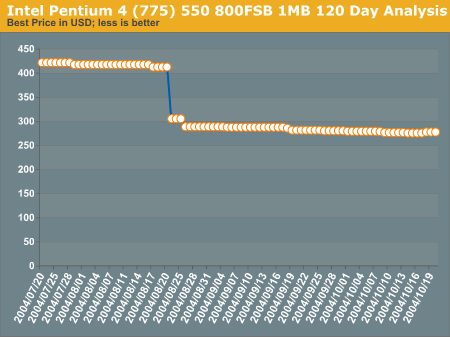
Intel Processors - Socket 478
Some may want to upgrade nearly their entire system all at once, but there are others who just don't need much more than a CPU upgrade. For those individuals, we recommend the Intel Pentium 4 (478) 3.0GHz 800FSB 512KB this week. This one is now sitting pretty in the area of $200 and is certainly a worthwhile option if you are still running on an older chip in the lower 2.x GHz range.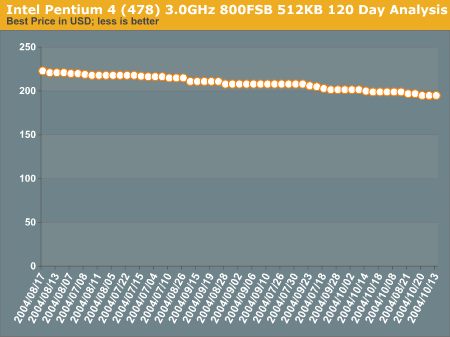
Intel Processors - Celeron
Celerons don't get much time in the spotlight these days, ever since Athlon XPs came onto the market at compatible prices and superior performance years ago. Since then, Intel has beefed up the Celeron a bit by slapping a Prescott core under the hood and renaming the product line to "Celeron D". While this does help quite a bit to improve the overall performance of the chip, it is still limited by slower clock speeds. In the end, the Celeron is still a budget processor that should really only be considered for those not looking as much for performance as they are reliability, low cost and basic to intermediate computing needs.Regardless of Prescott's real performance being at higher clock speeds, this week's Celeron recommendation goes to the Intel Celeron D (478) 330. Clocked at 2.66GHz and only costing a few dollars more than the older 2.6 chips, it is a chip that should be considered.
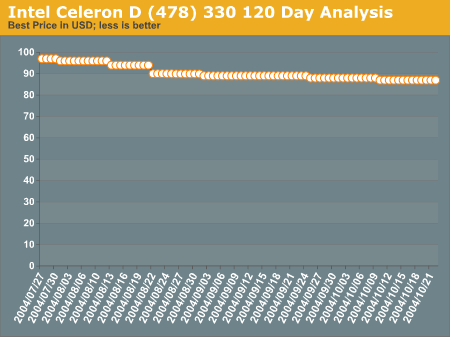
AMD Motherboards - NVIDIA nForce 2
The Abit NF7-S continues yet again to be the choice for a well-balanced Socket A nForce chipset motherboard. With its stability and ability to take chips such as the Barton 2500+ well beyond their stock speeds, it stands as one of the best boards around for the average user and enthusiast alike.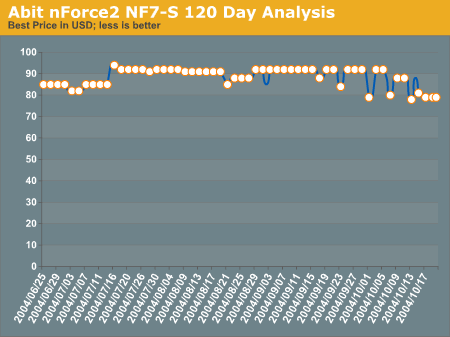
AMD Motherboards - NVIDIA nForce 3
The nForce 3 chipset continues to be the overclocker's choice for both the 754 and 939 platforms. It also doesn't hurt that these boards tend to come fully loaded with every feature known to man.For the Socket 754 buyer, DFI's nForce3 250 (754) LanParty UT motherboard is a great choice weighing in at under $140 shipped. Paired up with whichever 754-based Athlon 64 that you can afford, you will definitely see top performance using this board. As an always welcome bonus, overclocking capabilities on the LanParty UT are also very good and allow you to get the most out of even a budget 754 chip.
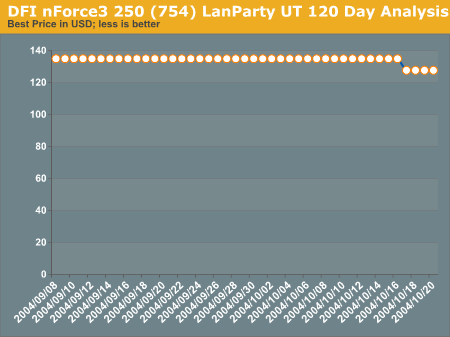
If you have a little extra cash to spend and can go for a Socket 939 processor, then the MSI nForce3 Ultra (939) K8N Neo2 Platinum continues to be a favorite and popular choice. As you can see below, the price on this board has been dropping ever since its initial release and has come down to a level that should help make 939 more affordable for everyone. This is definitely a good thing, since AMD will eventually cut off the 754 processors in favor of 939 and the lower cost of this board is only one more reason to consider 939.
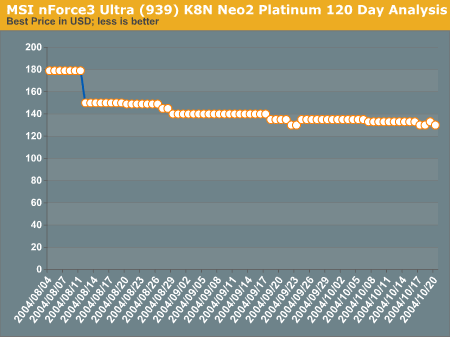
AMD Motherboards - Via K8T800
Via's K8T800 chipset has proven itself in the past months to be a very stable and reliable one for Athlon 64's and we see no reason this week to change that view. While it is true that an nForce 3 chipset is better, if overclocking is your goal, the stock performance of the next two boards is nothing to sneeze at and is definitely worth the price.Socket 754 options bring us invariably back to the MSI K8T800 Neo-FIS2R. Review after review, this board shows that it can push data around very quickly, and the end result is a very fast computer for not a lot of money. Buyers have come to expect the basics such as SATA, onboard LAN and onboard audio from their motherboards, and this model is right in line with those expectations, and then some.
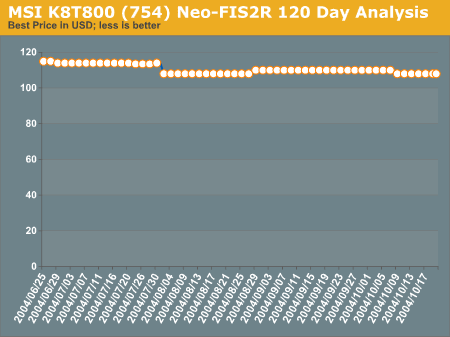
The Abit AV8 shows this week to be a great board for an even better price. This board sports a 939 socket, onboard 6 channel audio, SATA, RAID, and gigabit LAN, all in a package that overclocks very well, which is a rarity among Via-based motherboards.
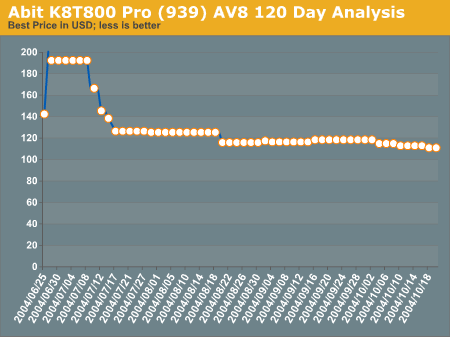
Intel Motherboards - 8xx
With the big fanfare that surrounds DDR2, PCI Express and Intel's newest socket (all of this resulting in the platform that builds on the 9xx chipsets), it's not hard to forget that the 8xx series is far from dead just yet. Specifically, 875P tends to be the favorite among overclockers and stock performance seekers alike. This week, our recommendation goes to the Abit 875P IC7-G MaxII. This position would have been handed over to MSI for their Neo-FIS2r (875P as well) except for the pricing difference, which currently shows the Abit costing about $20 less than its MSI counterpart. While this isn't a massive price difference, it would put the cost noticeable over the $150 mark, at which it tends to become more difficult to justify a price increase.Both boards are amazing FSB overclockers and throw in all the extras, such as gigabit LAN (courtesy of Intel's CSA bus), SATA support, and plenty of connections for audio. In the end, however, price wins and Abit takes the position for this slot.
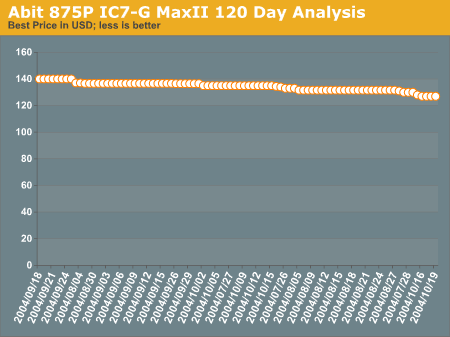
Intel Motherboards - 9xx
Last but not least, we come to Intel 9xx boards. These tend to be the priciest of upgrade solutions due to the fact that a new video card and RAM are usually needed in addition to the new motherboard, and not to mention a new CPU. So, unless you're building a new system from scratch, or just have a lot of money to spend on your upgrade, it might be best to stick to an 8xx board for the time being.If you are lucky enough to match either of the two above prerequisites, then by all means, there are a lot of great options available. Currently, the best board that we can think of in this category is the Asus 925X P5AD2. This board has everything including the kitchen sink. The only problem is its price tag, which comes in at over $220 for the Deluxe and almost $260 for the Premium edition. Being a price guide, this board obviously does not make the cut for its sheer cost. Hopefully, the board will come down in price soon so that we can start recommending it without cringing and clutching our wallets.
For the time being, the Abit AA8-DuraMAX appears to be the best value around. It's not entirely too far away from the P5AD2 in performance or features, but it does distance itself quite well when it comes to price. At less than $180, this motherboard is the way to go to move up to the latest and greatest technologies while still saving some cash to purchase all of the other components that you'll need just to use the motherboard.








